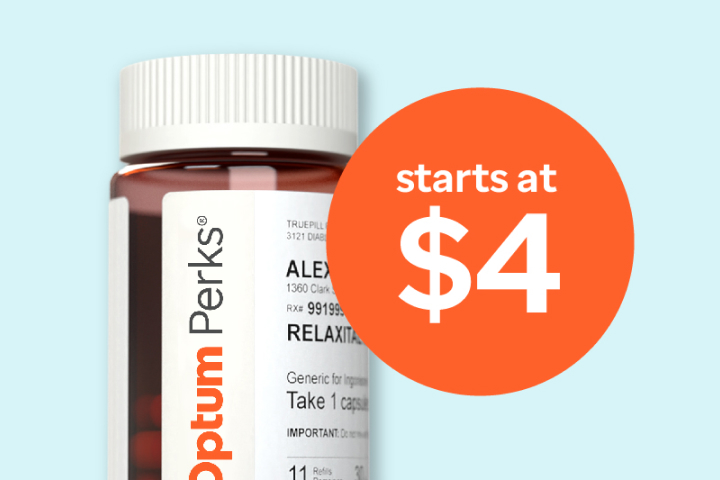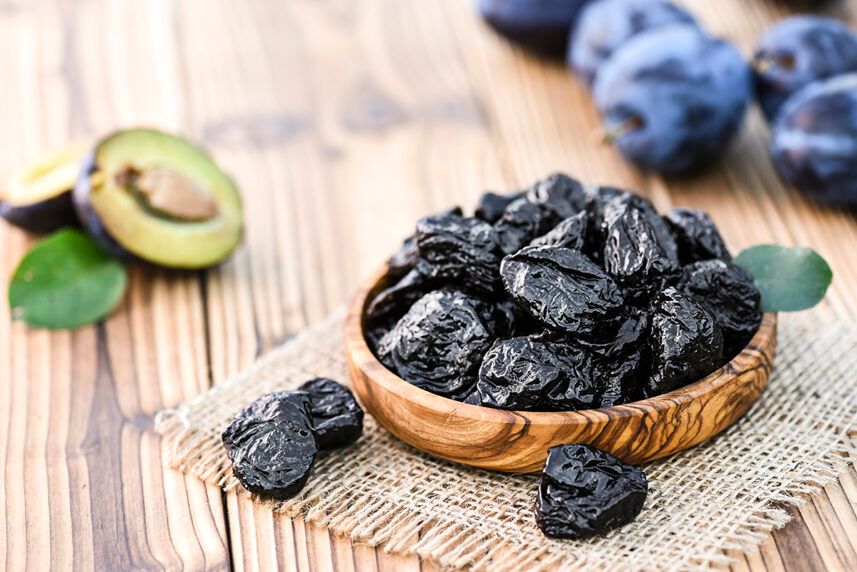Mid-May marks the beginning of plum season — the perfect time to enjoy this sweet and tart stone fruit. While plums don’t need any help in the reputation department, their dried form, prunes, could use a bit of a boost. They’re much more than just a ho-hum snack you eat to help yourself “go.” Prunes are sweet, and you can use them in a number of different dishes. They have some surprising health benefits, too.
In addition to their fiber content, prunes are chock-full of vitamins and minerals, including nutritional stars such as magnesium, potassium, and vitamins A and K. They’re also high in antioxidants, which act as a defense system for the body’s cells, says registered dietitian nutritionist Leslie Bonci. She’s the owner of Active Eating Advice in Pittsburgh.
And prunes have a leg up on plums in a major way: You can keep them in your pantry for months and enjoy them year-round.
(Here’s another thing you can enjoy year-round: A free prescription discount card. Use it to save up to 80% at the pharmacy — no strings attached.)
Whether you eat prunes daily or you’re on the fence, here are 5 health benefits you should know about:
1. Prunes can keep you regular
This may not be a big surprise. But do you know why prunes are famous for their ability to ease constipation? It’s because they contain a lot of fiber. In particular, they contain insoluble fiber.
This type of fiber pulls water into your stool, making it softer and easier to pass. Dried plums also contain sorbitol, a type of carbohydrate known as a sugar alcohol, which draws fluid into your intestines to promote bowel movements.
When you’re backed up, stick with whole prunes instead of prune juice. (They contain more fiber.) Until you know how prunes will affect you, it’s best to eat them in moderation. Most research, though, shows that people usually have no trouble with 5 to 10 prunes a day, Bonci says.
2. Prunes can help prevent bone loss
Prunes are packed with nutrients that are essential for healthy bones, says registered dietitian nutritionist Erin Kenney. She’s the owner of Nutrition Rewired in Boston. These nutrients include vitamin K, potassium and boron. Vitamin K is thought to activate proteins involved in bone formation, for example.
In fact, a 2022 study out of Penn State University found that eating about 5 or 6 whole prunes a day may help prevent bone loss in postmenopausal women. That’s key, because after menopause, women’s bodies make less estrogen, an important hormone for maintaining bone density.
And it’s not just women who benefit. Another recent trial found that men who ate about 10 prunes a day for a year saw small bone-protective effects, compared with those who didn’t.

100% online care
Treatment plans in 15 minutes or less for 40+ conditions.
Start consult now3. Prunes can curb your appetite
If you’re trying to maintain or lose weight, prunes can be a great choice. Why? Because it takes your body longer to digest high-fiber foods, so they help you feel fuller for longer.
A recent study in Nutrition Bulletin found that people following a weight loss plan who ate a daily snack of prunes reported feeling less hungry and more satisfied than those who didn’t eat prunes. They also ate less at their next meal.
4. Prunes can lower your blood sugar
You might be thinking: “How can a dried fruit that’s high in sugar actually lower my blood sugar?” Well, whole fruits such as prunes are very different from processed cookies or cakes.
For one, prunes are high in fiber, which slows down the absorption of sugar. A serving of just 38 to 40 grams of prunes, or roughly 4 dried prunes, contains 11% of your daily fiber needs, says Bahram H. Arjmandi, PhD. He’s a registered dietitian and director of the Center for Advancing Exercise and Nutrition Research on Aging at Florida State University.
The sugar alcohol in prunes, sorbitol, also digests more slowly than other types of sugars. This means it’s less likely to spike your blood sugar levels.
“Prunes have a low glycemic index and, along with soluble fiber, can slow the absorption of sugar and help improve blood sugar levels,” Arjmandi says. That’s important, given that 1 in 3 Americans have prediabetes. (And more than 80% don’t know it, according to the Centers for Disease Control and Prevention.)
Recommended reading: How to put Type 2 diabetes into remission.
5. Prunes can lower your blood pressure
Potassium plays a powerful role in the human body. It helps our kidneys get rid of excess sodium (and extra fluid along with it). It also eases tension in your blood vessel walls. Together, those benefits help lower blood pressure, according to the American Heart Association.
That’s why high-potassium foods are a big part of the DASH diet, which stands for Dietary Approaches to Stop Hypertension. DASH is continually ranked among the best diets for heart health.
Luckily for us, prunes contain a lot of potassium. For example, you can get 20% to 30% of your daily potassium needs (women need 2,600 milligrams per day and men need 3,400) just by eating 10 to 12 prunes.

Free prescription coupons
Seriously … free. Explore prices that beat the competition 70% of the time.
Get free card How to eat more prunes — and enjoy them, too
Like apricots or raisins, prunes can be eaten plain as a sweet and highly portable snack. But you can also blend them into a smoothie, use them as a base for homemade granola bars, or add them to savory dishes, such as roasted brussels sprouts.
Prunes can also make baked goods healthier, Arjmandi says. “You can substitute half the fat in the recipe with prune puree and also cut down on added sugar because they’re naturally sweet,” he says.
There are many upsides to adding prunes to your diet. Still, it pays to work them in slowly. Eating too much fiber too quickly can sometimes make you feel gassy or bloated. Start by enjoying a couple of prunes a few days a week, and go from there. And don’t forget to stay hydrated — that will also help keep things moving along.
(On a medication for hypertension or another chronic condition? Use our mobile app to find and save free prescription medication coupons.)

